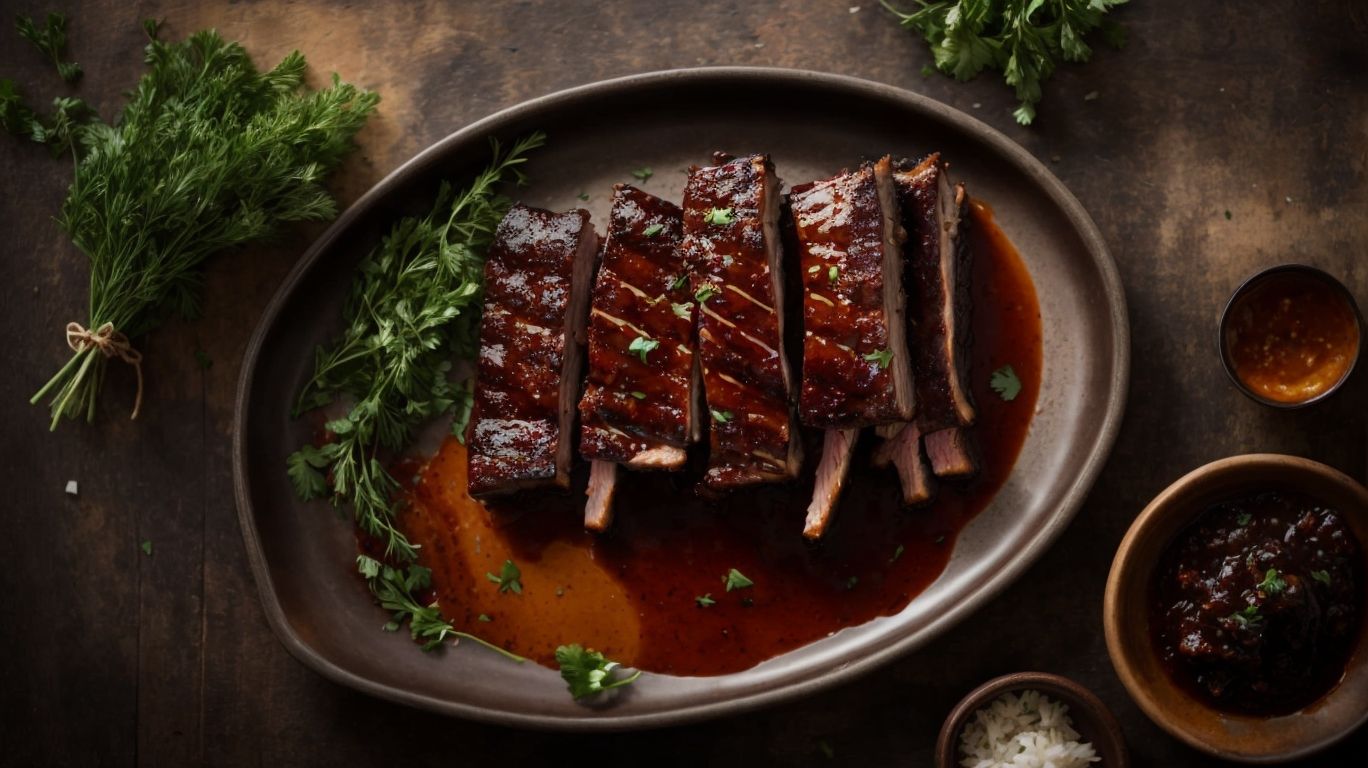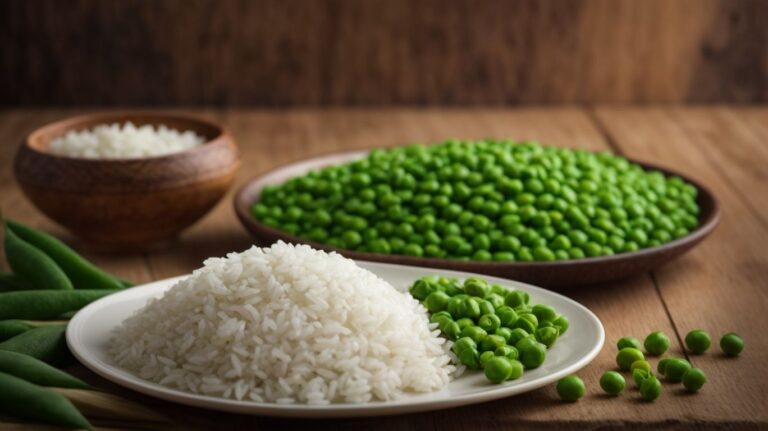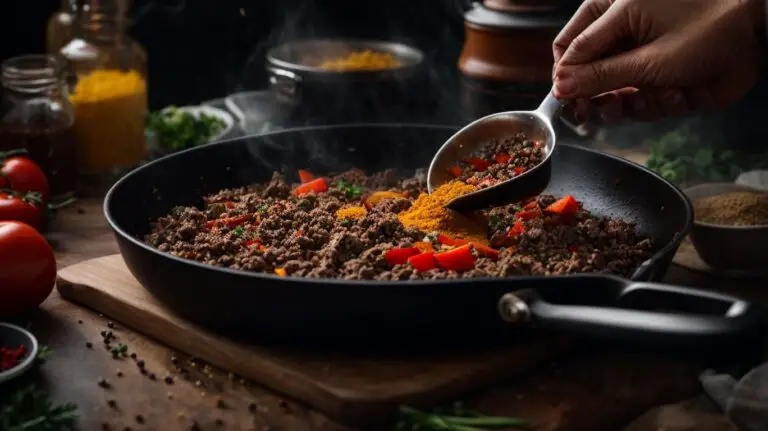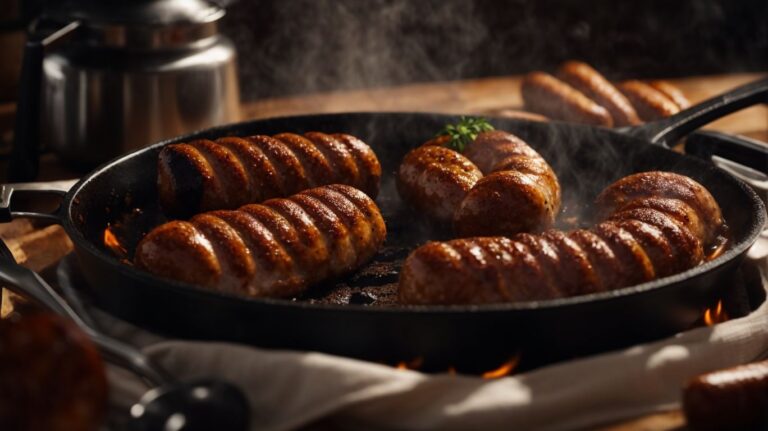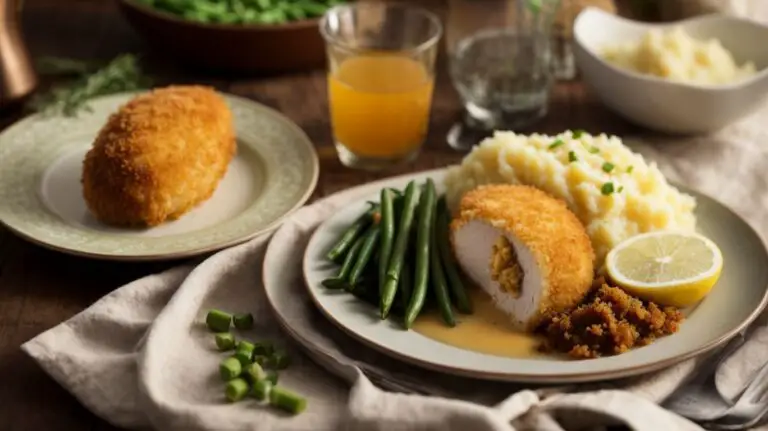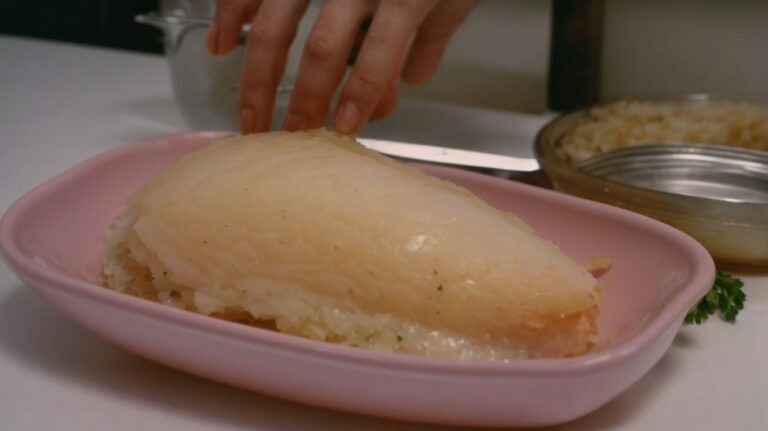How to Cook Ribs After Boiling Them?
Are you looking to elevate your rib game in the kitchen? Boiling ribs before cooking them may just be the secret ingredient you’ve been missing.
We explore the benefits of boiling ribs, how to prepare them for boiling, different cooking methods post-boiling, and tips for achieving perfectly cooked ribs every time.
Whether you’re a seasoned chef or a novice in the kitchen, these tips and tricks will help you master the art of cooking delicious, finger-licking ribs.
Key Takeaways:
Why Boil Ribs Before Cooking?
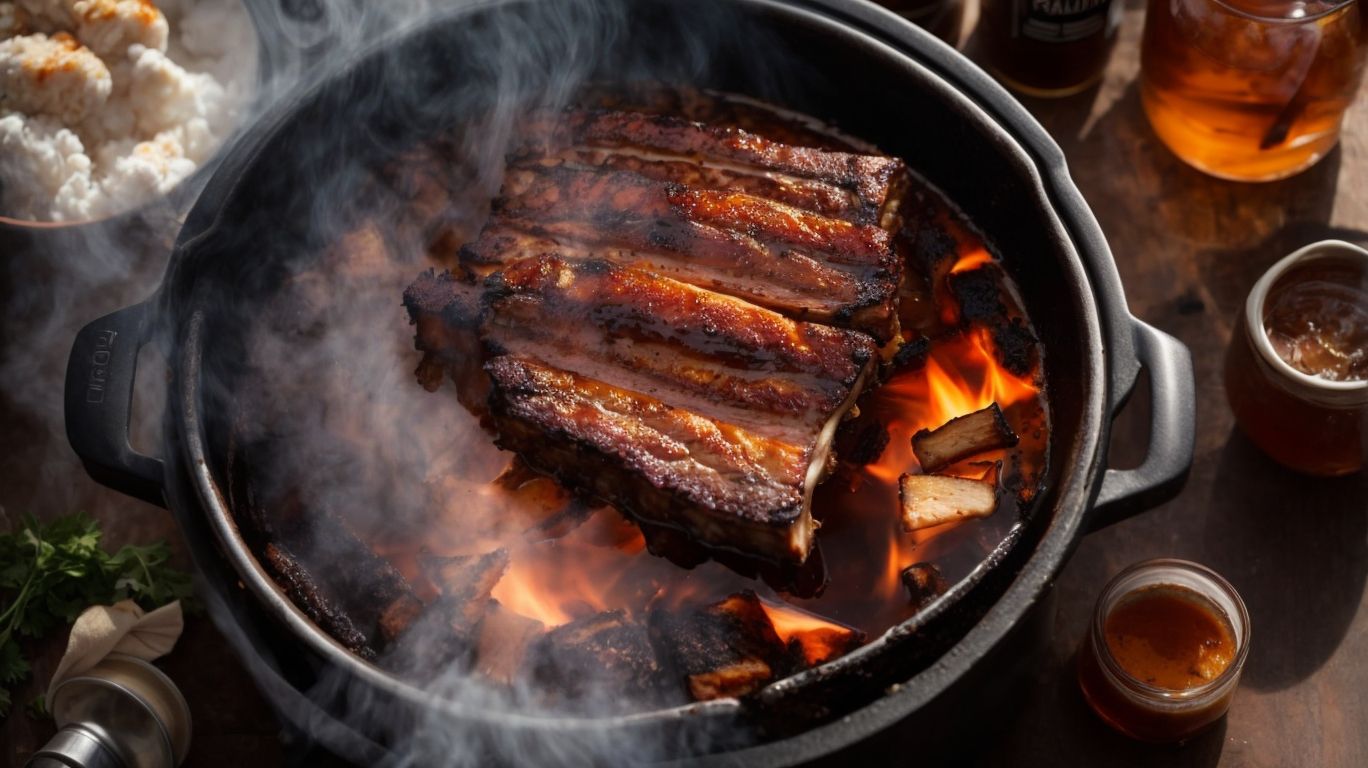
Credits: Poormet.Com – Gabriel Brown
Boiling ribs before cooking is a common practice in barbecue preparation, enhancing tenderness and flavor through a pre-cooking method.
When ribs are boiled, the process helps to break down tough connective tissues, making them more tender and easier to eat. Boiling ribs can help to remove excess fat, resulting in a leaner and healthier final dish. This method also allows for the ribs to absorb the flavors of the broth or spices used during the boiling process, adding an extra depth of taste to the meat.
By boiling the ribs first, you can ensure that they are thoroughly cooked before they even hit the grill. This can be particularly useful for larger cuts of ribs, ensuring that they are cooked to perfection without the risk of burning or drying out.
What Are the Benefits of Boiling Ribs?
Boiling ribs offers several benefits such as tenderizing the meat, infusing flavors, and reducing cooking time during the barbecue process.
By boiling ribs, the connective tissues within the meat break down, resulting in a more tender and juicy texture once cooked. The boiling process also helps in infusing the ribs with the flavors of herbs, spices, and seasonings added to the cooking liquid, creating a more flavorful end product. Precooking the ribs through boiling significantly speeds up the grilling or smoking time required during the barbecue process, making it a time-saving technique especially for gatherings or parties.
How Long Should You Boil Ribs?
The ideal duration for boiling ribs typically ranges between 60 to 90 minutes, ensuring the meat reaches optimal tenderness while preserving its juiciness.
Boiling ribs for too short a time can result in tough and chewy meat, while overboiling can cause the meat to become mushy and lose its flavor. It’s crucial to monitor the ribs closely while they simmer in the pot, checking for tenderness at regular intervals.
- For those looking for fall-off-the-bone tenderness, around 75 to 85 minutes is often the sweet spot. This timeframe allows the meat to tenderize while still retaining its juiciness, creating a mouthwatering dining experience.
How to Prepare Ribs for Boiling?
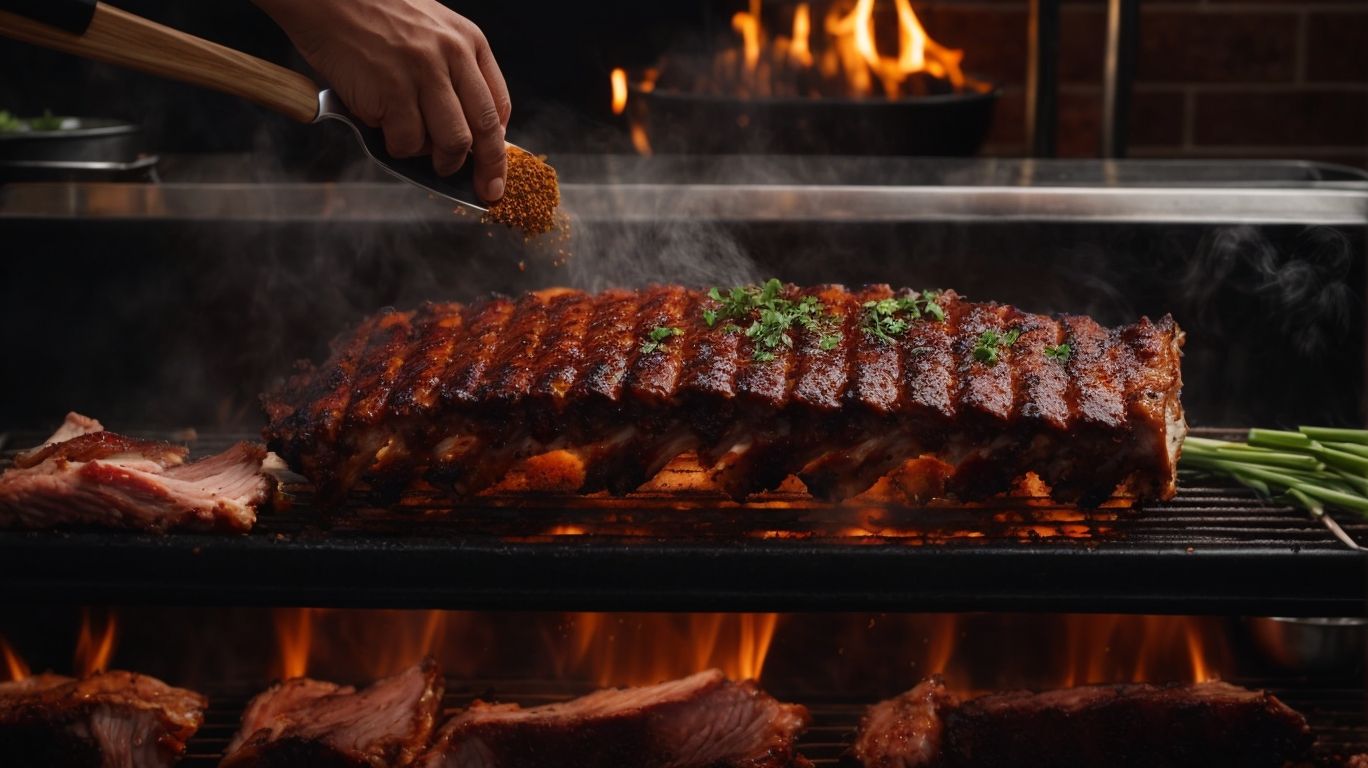
Credits: Poormet.Com – Eugene Lee
Preparing ribs for boiling involves selecting a suitable recipe, cleaning the meat thoroughly, and setting up a pot of water for the boiling process.
When choosing a recipe for boiling ribs, consider flavors that complement the natural taste of the meat. Whether it’s a classic BBQ sauce-based recipe or a more exotic marinade, the key is to engage the taste buds.
Next, cleaning the ribs involves removing excess fat and any unwanted debris. This ensures a cleaner cooking process and enhances the overall taste.
Setting up the pot of water requires filling it with enough water to fully submerge the ribs. Adding seasonings like bay leaves, peppercorns, and onions can infuse flavors into the meat as it boils.
What Ingredients Are Needed for Boiling Ribs?
To boil ribs effectively, you will require ingredients such as water, a flavorful sauce or seasoning, and a suitable cooking method to achieve the desired tenderness.
When boiling ribs, the water serves as the base for infusing flavors into the meat while keeping it moist. Consider using broth or adding aromatics like garlic and onions to enhance the taste profile.
The choice of sauce plays a crucial role in determining the final flavor of the ribs. Whether you opt for a barbecue sauce, a marinade, or a dry rub, it’s essential to complement the natural richness of the meat while adding layers of complexity. And lastly, selecting the right cooking method—whether simmering on the stove, using a slow cooker, or pressure cooking—can impact the texture and tenderness of the ribs.
By combining these elements thoughtfully, you can elevate your boiled ribs to a mouthwatering dish that will surely impress your guests.
What Are the Steps for Boiling Ribs?
The process of boiling ribs involves placing them in a pot of seasoned water, simmering until tender, and finishing them on a grill for that classic BBQ flavor.
When preparing the pot for boiling ribs, it’s essential to choose one that is large enough to comfortably hold the ribs and the seasoned water. Next, fill the pot with enough water to fully cover the ribs and add in seasonings such as salt, pepper, garlic, and herbs to enhance the flavor. Allow the ribs to simmer gently in the seasoned water until they reach the desired tenderness, which usually takes a couple of hours.
Once the ribs are fork-tender, carefully remove them from the pot and transfer them to a preheated grill to add those distinct char marks and smoky essence. Brushing the ribs with a BBQ sauce during the grilling process will further enhance their flavor and create a delicious glaze. Grill the ribs until they develop a caramelized exterior, ensuring to turn them occasionally for even cooking.
How to Cook Ribs After Boiling?
After boiling, ribs can be further cooked on a grill or barbecue to enhance the flavor profile, impart a smoky taste, and achieve a delicious caramelized exterior.
One popular method is to prepare grilled ribs, where the ribs are placed directly over the heat source and cooked until they reach a charred perfection.
- This method infuses the meat with a charred, smoky flavor that is irresistible to many barbecue enthusiasts.
- The direct heat helps to caramelize the ribs, creating a mouthwatering, crispy exterior, while keeping the inside tender and juicy.
Barbecuing, on the other hand, involves slow-cooking the ribs over low, indirect heat, often with the addition of hardwood chips to create that signature barbecue flavor profile.
| Barbecuing requires patience and precision, as the ribs need to cook low and slow for an extended period to achieve optimal tenderness and flavor. |
This cooking method results in ribs that are fall-off-the-bone tender, with a rich and smoky flavor that penetrates deep into the meat.
What Are the Different Cooking Methods for Ribs?
Various cooking methods for ribs include grilling, smoking, and oven baking, each offering unique textures and flavors to suit different preferences.
Grilling ribs over direct heat imparts a charred flavor and crispy exterior, perfect for those who enjoy a smoky taste with a slightly crunchy texture.
Smoking ribs involves slow-cooking at a low temperature, resulting in tender meat that falls off the bone, ideal for barbecue enthusiasts seeking that melt-in-your-mouth goodness.
On the other hand, baking ribs in the oven creates a juicy and succulent dish, with seasonings locking in moisture for a rich and flavorful experience.
What Are the Best Sauces and Rubs for Ribs?
Selecting the best sauces and rubs for ribs is crucial to enhancing their flavor profile, with options ranging from tangy BBQ sauces to savory dry rubs.
Regarding BBQ sauces, sweet and smoky varieties like Kansas City-style or Memphis-style are popular choices, adding a rich depth of flavor. These sauces work wonderfully when basted onto slow-cooked ribs, creating a caramelized glaze.
On the other hand, spicy mustard-based sauces can provide a tangy kick that pairs well with grilled ribs.
For dry rub enthusiasts, a blend of paprika, garlic, brown sugar, and cayenne pepper can create a mouth-watering crust on ribs when slow-cooked. This seasoning is great for those who prefer a more intense flavor without the sweetness of BBQ sauces.
Tips for Perfectly Cooked Ribs
Achieving perfectly cooked ribs requires attention to detail in cooking time, temperature control, flavor infusion, and proper meat tenderness.
Regarding cooking ribs, start by selecting high-quality meat that is fresh, well-marbled, and ideally sourced from a reputable butcher or supplier. Before cooking, ensure to properly trim excess fat and remove the membrane on the underside of the ribs for optimal tenderness.
Marinating the ribs in a flavorful mixture of herbs, spices, and sauces is essential to infuse them with delicious taste. Consider using a dry rub for a crusty exterior or a wet marinade for deeper flavor penetration.
During cooking, maintain a consistent temperature on your grill or smoker to achieve even cooking. Indirect heat is preferred for slow-cooking ribs to prevent burning and ensure tenderness.
How to Tell When Ribs Are Done?
Determining when ribs are done involves checking for meat tenderness, observing color changes, and ensuring they have reached the desired internal temperature after a specified cooking duration.
To check for tenderness, gently pull two adjacent ribs apart; if the meat starts to tear easily, they are likely done.
Look for a nice caramelization on the surface, indicating a good sear that adds flavor.
Color is crucial; the meat should have pulled back from the bones slightly, revealing the edge.
In terms of temperature, beef ribs are typically cooked to an internal temperature of around 203°F (95°C), ensuring a perfect blend of juiciness and tenderness.
How to Prevent Ribs from Drying Out?
To prevent ribs from drying out during cooking, consider basting with flavorful sauces, using a grill for searing, and maintaining proper temperature control throughout the process.
One effective technique for retaining moisture in ribs involves basting them regularly with a rich marinade or sauce. This not only adds layers of flavor but also helps to keep the meat juicy and succulent.
When grilling ribs, it’s crucial to sear them over high heat initially. This step locks in the natural juices and creates a flavorful crust on the outside.
Paying close attention to temperature management is key. Ensuring that the grill maintains a consistent temperature, typically between 225-250°F, helps to slowly cook the ribs without drying them out. Indirect heat methods like smoking or using a water pan can also aid in keeping the meat moist throughout the cooking process.
How to Add Smoky Flavor to Ribs?
Infusing smoky flavor into ribs can be achieved by utilizing wood chips, charcoal, or a smoker during the cooking process to impart that signature BBQ taste.
To enhance the smoky notes in your ribs, the choice of wood chips plays a significant role. Different woods such as hickory, apple, cherry, or mesquite can impart unique flavors to your barbecue. Experimenting with various wood types can help you find the perfect match for your taste preferences.
Regarding smoking methods, consider using the low and slow technique for tender, flavorful ribs. Maintaining a consistent temperature and adding soaked wood chips intermittently can create a steady stream of smoke, infusing your ribs with that sought-after smoky aroma.
Conclusion
Mastering the art of rib preparation involves a blend of boiling, cooking, grilling, and saucing techniques to deliver a delectable BBQ experience for all.
One crucial aspect to keep in mind when cooking ribs is the method diversity. This includes boiling to tenderize the meat, followed by low and slow cooking to infuse flavors and ensure a juicy outcome. Incorporating grilling at the end adds that coveted charred exterior.
Flavor infusion plays a vital role in creating a memorable BBQ feast, with dry rubs, marinades, or brines enhancing the taste profile. Sauce selection can take your ribs to the next level – from tangy and spicy to sweet and smoky, the right sauce can elevate the entire dining experience. Experimenting with different combinations of rubs, marinades, and sauces ensures a dynamic flavor profile that will keep your guests coming back for more.
Remember, the key to outstanding BBQ is not just in the cooking but in the artful balance of techniques and flavors to create a mouthwatering dish that leaves a lasting impression.
Frequently Asked Questions
1. How to Cook Ribs After Boiling Them?
After boiling your ribs, the next step is to prepare them for cooking. This involves seasoning and choosing a cooking method. Keep reading for our top tips on how to cook ribs after boiling them.
2. Can I Season the Ribs Before Boiling Them?
Yes, you can season your ribs before boiling them for added flavor. However, be careful not to use too much salt as the boiling process will already extract some of the meat’s natural flavors.
3. What Cooking Methods Can I Use for Ribs After Boiling Them?
After boiling your ribs, you can choose to grill, bake, or broil them. Each method will give the ribs a different flavor and texture, so it’s best to experiment and find your favorite.
4. How Long Should I Cook Ribs After Boiling Them?
The cooking time for ribs after boiling them will depend on the cooking method you choose. Grilling typically takes 10-15 minutes, while baking and broiling can take 20-30 minutes. Use a meat thermometer to ensure the ribs reach an internal temperature of 145°F.
5. Can I Cook Ribs After Boiling Them in a Slow Cooker?
Yes, you can use a slow cooker to cook ribs after boiling them. This method will result in tender and flavorful ribs, but it will take longer (4-6 hours on low heat) compared to other cooking methods.
6. How Should I Serve Ribs After Cooking Them?
Ribs are best served hot and fresh off the grill or oven. You can serve them with your favorite BBQ sauce or a homemade glaze. Don’t forget to let the ribs rest for a few minutes before serving to allow the juices to redistribute and keep the meat moist.

